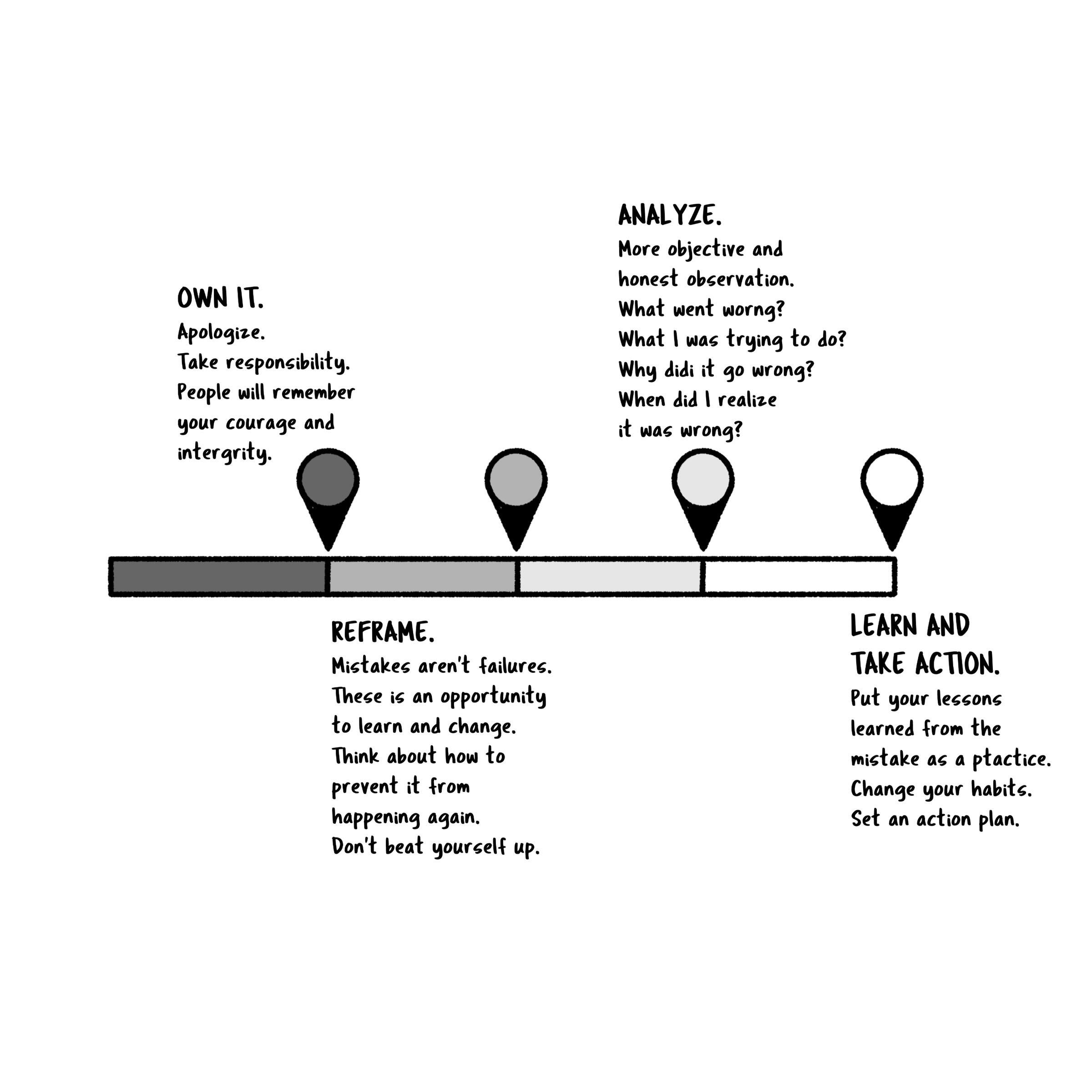
What is Reframe Failure?
Reframe Failure is a cognitive restructuring technique that challenges our automatic negative responses to failure. Instead of viewing failure as a definitive endpoint or personal deficiency, this framework encourages us to see it as valuable feedback, a learning opportunity, and a necessary step in the journey toward mastery.
The core principle is simple yet profound: failure is not the opposite of success; it's a component of success. By changing our perspective on failure, we can extract valuable lessons, build resilience, and accelerate our personal and professional development.
The History and Origin
The concept of reframing failure has roots in various psychological theories, particularly cognitive-behavioral therapy (CBT) developed by Aaron Beck in the 1960s. The modern application draws heavily from Carol Dweck's growth mindset research, which demonstrates that viewing challenges and failures as opportunities to improve leads to greater achievement and satisfaction.
Silicon Valley's "fail fast, fail often" culture has popularized this approach in business contexts, with companies like Google and Amazon celebrating intelligent failures that lead to innovation and breakthrough discoveries.
How to Use the Reframe Failure Framework
Step 1: Acknowledge the Failure
First, recognize and accept that a failure has occurred. Avoid denial or minimization. Simply state what happened without judgment.
Step 2: Separate Identity from Outcome
Remember that failing at something doesn't make you a failure. Use language like "I failed at this attempt" rather than "I am a failure."
Step 3: Extract the Lessons
Ask yourself:
- What specific factors contributed to this outcome?
- What can I learn from this experience?
- What would I do differently next time?
- What skills or knowledge gaps were revealed?
Step 4: Identify the Hidden Benefits
Consider unexpected positives:
- Did this failure prevent a larger mistake?
- Did it reveal important information?
- Did it strengthen your resilience?
- Did it clarify your values or priorities?
Step 5: Create an Action Plan
Based on your insights, develop concrete steps for improvement. Focus on what you can control and influence going forward.
Step 6: Celebrate the Courage to Try
Acknowledge the bravery it took to attempt something with uncertain outcomes. This reinforces a positive relationship with risk-taking and innovation.
Practical Examples
Career Setback: After being passed over for a promotion, instead of dwelling on disappointment, Maria used the Reframe Failure framework. She identified skill gaps mentioned in the feedback, enrolled in relevant courses, sought mentorship, and successfully earned a better position six months later.
Business Venture: When Tom's first startup failed, he analyzed what went wrong: poor market research and premature scaling. These insights informed his second venture, which succeeded because he validated demand before investing heavily and grew more strategically.
Academic Challenge: A student failing an important exam reframed it as revealing gaps in their study methods. They developed better learning strategies, sought tutoring, and not only passed the retake but improved their overall academic performance.
Benefits and Life Impact
Implementing the Reframe Failure framework can profoundly improve your life in several ways:
Increased Resilience: By viewing failures as temporary and instructive rather than permanent and destructive, you build psychological resilience that helps you bounce back faster from setbacks.
Enhanced Innovation: When failure loses its sting, you become more willing to take calculated risks and try new approaches, leading to greater creativity and innovation.
Accelerated Learning: Each failure becomes a data point for improvement, dramatically speeding up your learning curve in any endeavor.
Reduced Anxiety: Removing the fear of failure reduces performance anxiety and allows you to perform at your best when it matters most.
Improved Relationships: This framework helps you model healthy responses to setbacks for others, particularly children, fostering growth mindsets in your family and team.
Greater Life Satisfaction: People who successfully reframe failure report higher life satisfaction because they see themselves as constantly growing rather than being defined by their setbacks.
The Reframe Failure framework transforms one of life's most challenging experiences into a powerful tool for growth. By changing how we think about failure, we change our relationship with challenge itself, opening doors to achievements we might never have attempted otherwise. Remember: every expert was once a beginner who refused to let failure be the end of their story.